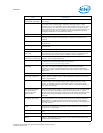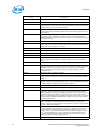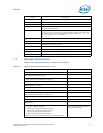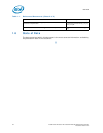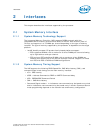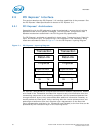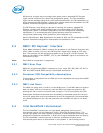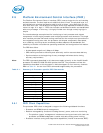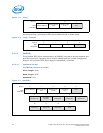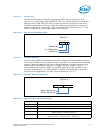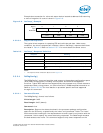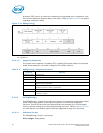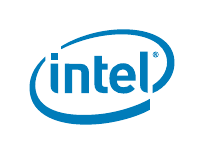
Intel® Xeon® Processor E5-1600/E5-2600/E5-4600 Product Families 29
Datasheet Volume One
Interfaces
optimized for low latency and high scalability, as well as packet and lane structures
enabling quick completions of transactions. Reliability, availability, and serviceability
features (RAS) are built into the architecture.
The physical connectivity of each interconnect link is made up of twenty differential
signal pairs plus a differential forwarded clock. Each port supports a link pair consisting
of two uni-directional links to complete the connection between two components. This
supports traffic in both directions simultaneously. To facilitate flexibility and longevity,
the interconnect is defined as having five layers: Physical, Link, Routing, Transport, and
Protocol.
• The Physical layer consists of the actual wires carrying the signals, as well as
circuitry and logic to support ancillary features required in the transmission and
receipt of the 1s and 0s. The unit of transfer at the Physical layer is 20-bits, which
is called a Phit (for Physical unit).
• The Link layer is responsible for reliable transmission and flow control. The Link
layer’s unit of transfer is 80-bits, which is called a Flit (for Flow control unit).
• The Routing layer provides the framework for directing packets through the
fabric.
• The Transport layer is an architecturally defined layer (not implemented in the
initial products) providing advanced routing capability for reliable end-to-end
transmission.
• The Protocol layer is the high-level set of rules for exchanging packets of data
between devices. A packet is comprised of an integral number of Flits.
The Intel QuickPath Interconnect includes a cache coherency protocol to keep the
distributed memory and caching structures coherent during system operation. It
supports both low-latency source snooping and a scalable home snoop behavior. The
coherency protocol provides for direct cache-to-cache transfers for optimal latency.



